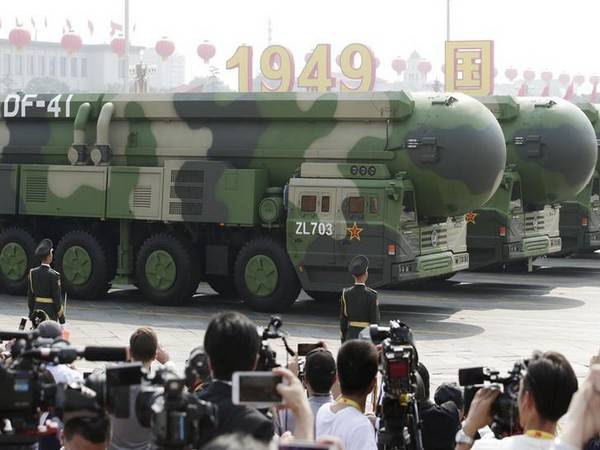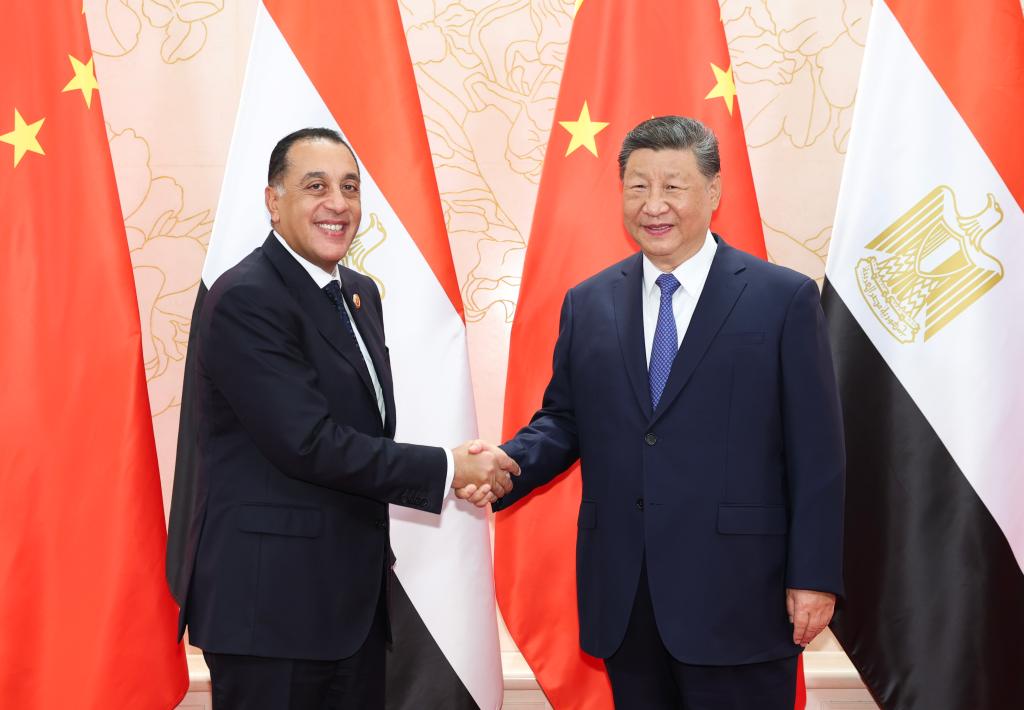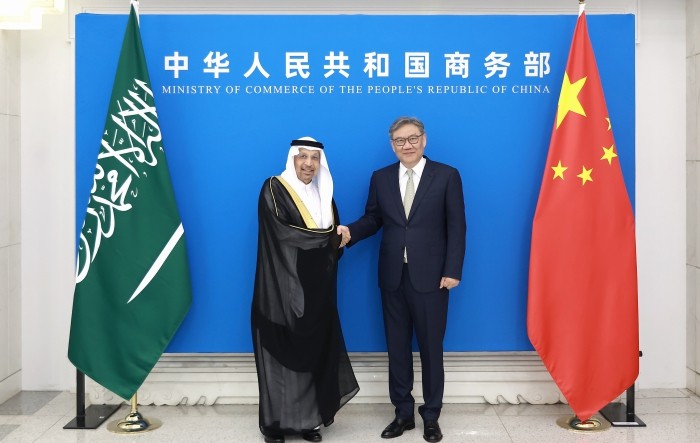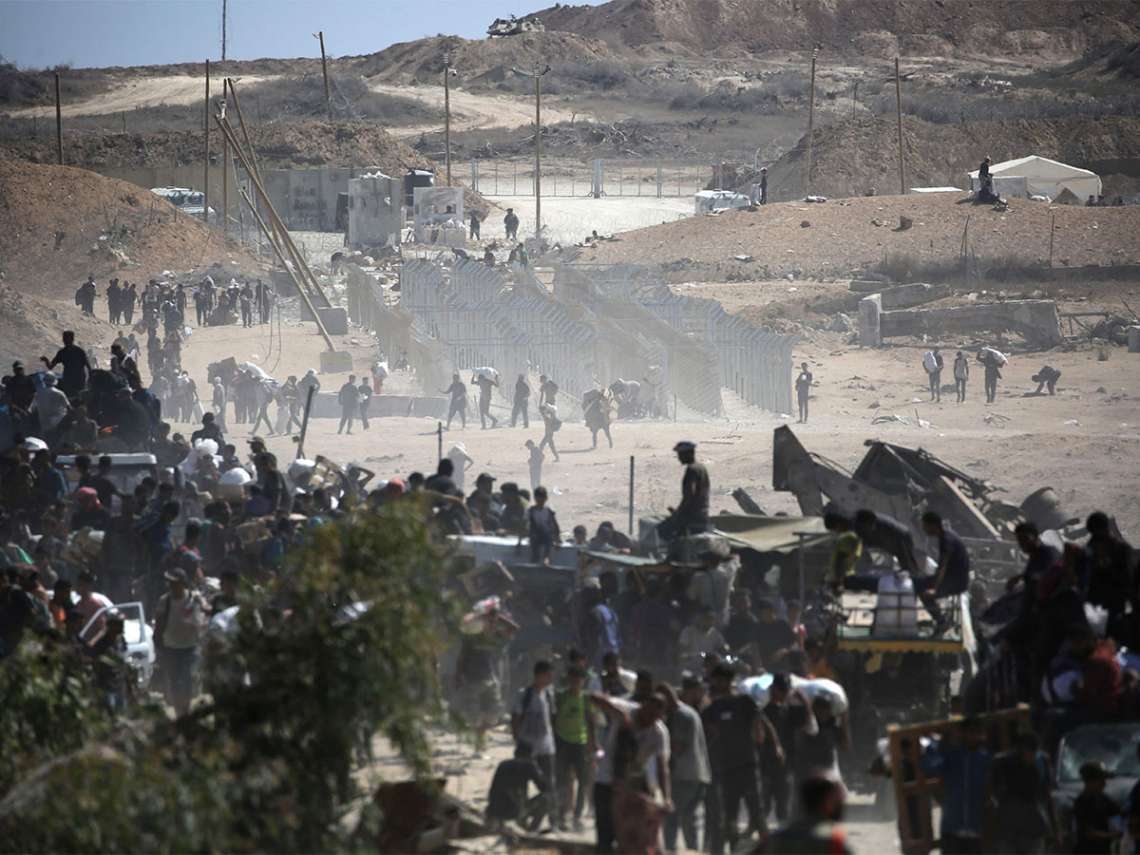By 2028, China will own more than 1,000 ballistic missile launchers, of which 507 are nuclear-capable, 342-432 are conventional launchers and at least 252 are dual-capable launchers. Alas, China refuses to comment on this phenomenal build-up and declines to acknowledge its extent….reports Asian Lite News
It is alarming when a military expands its intercontinental ballistic missile (ICBM) launchers by a factor of five. China has done precisely this, but the reasons for this snowballing have never been expounded by Beijing.
The People’s Liberation Army (PLA) is a secretive organization at best, but the missile force takes paranoia to a whole new level. However, a researcher in the USA has shed much-needed light on the PLA Rocket Force (PLARF), which is responsible for China’s conventional and nuclear-tipped missile inventory. In total, the PLARF boasts 41 combat missile brigades, many of which were only created in the past decade.
Decker Eveleth of the James Martin Center for Nonproliferation Studies, at the Middlebury Institute of International Studies at Monterey published an up-to-date PLARF order of battle in July. Eveleth’s credentials are top-notch, for he was the first civilian to identify massive missile silo fields being built in China’s interior in 2021. Eveleth warned: “Currently, Chinese nuclear thinking is a black box – we can see the security drivers being fed into the box, and we can see the military infrastructure and deployed military systems that come out of that box, but as the Chinese military does not publicly talk about their thoughts concerning nuclear weapons and deterrence, their exact thinking eludes us.”
The PLARF has traditionally been quite small and held at low readiness levels. It was constrained by China’s policy of “no first use” of nuclear weapons. However, in 2015, Chairman Xi Jinping raised the Rocket Force into full service in its own right. A decade ago, China had only about 50 intercontinental ballistic missiles (ICBM), of which only 30 could reach the US mainland. Now, the PLARF owns a range of missile types that can perform specific missions such as neutralizing Taiwanese defenses, targeting American warships at sea or in port, or conducting retaliatory nuclear strikes.
The aforementioned report summarized: “China is currently in the process of radically expanding its arsenal of conventional and nuclear land-based missile launchers. Over the past decade, China has doubled the number of combat missile brigades in the PLARF, and has unveiled a myriad of new capabilities, including missiles capable of firing both conventional and nuclear warheads, and missiles equipped with hypersonic glide vehicles designed to evade missile defenses.”
By 2028, China will own more than 1,000 ballistic missile launchers, of which 507 are nuclear-capable, 342-432 are conventional launchers and at least 252 are dual-capable launchers. Alas, China refuses to comment on this phenomenal build-up and declines to acknowledge its extent.
What, then, are some of the most important points raised by this Middlebury Institute report? Beginning with ICBMs, from a figure of just over 100 launchers, the force will multiply to more than 500. Much of this growth comes from 334 silos for solid-fuel ICBMs being constructed in large fields at Yumen, Hami and Hanggin Banner, as well as Jilantai. There are 14 silos at the latter site, used for training and developing concepts of operation. With the Hanggin Banner site having notably different command-and-control facilities, this suggests it will have different missiles to Yumen and Hami. Both the DF-31 and DF-41 types have been mooted as candidates to populate these silo fields.

Eveleth noted that construction of these silo fields continues, “…with Yumen being closest to completion. Digging and concrete pouring is mostly done, [but it is] unclear exactly how close those fields are to entering operation. One extremely interesting detail is the construction of what appear to be radar platforms and other support facilities for radar at all three sites. Possibly this indicates that the PLARF will attempt to defend these fields with anti-air weapons.” It is difficult to know how many missiles will be located at each site, but there are reasons to believe China might use a “shell game” strategy, whereby a limited number of missiles are periodically moved from silo to silo to keep an opponent guessing and to force them to commit more missiles to destroying them in any attack.
What implications can be drawn from China’s newfound propensity for missile silos? “A massive expansion in solid-fueled silos could be a result of decreasing confidence in the survivability of their mobile forces, and an attempt to create a ‘missile sponge’ that would be large enough to absorb an American first strike and leave the United States with few missiles for targeting China’s mobile forces.” Liquid-fuel ICBM silos are also growing in number. For example, 18 DF-5 ICBM silos are being built at three different locations. In fact, DF-5 silos will more than double over the next three years, from 18 to at least 48 operational silos.
The author added: “Another notable fact about the new DF-5-pattern construction is that the silos have much larger support facilities than those that have been built at older DF-5 sites. The scale of the facilities under construction could indicate a higher alert state than previously seen,” possibly a launch-on-warning (LOW) capability.
In fact, in the report writer’s opinion, “The most concerning change to China’s nuclear forces is not actually the numerical expansion in launchers, but their apparent shift from a retaliation plan that imagined firing a salvo of nuclear missiles after an adversary had already completed an attack against the Chinese homeland to a posture of LOW. Under launch on warning, an incoming nuclear attack is detected in flight with satellites and ground-based radar, allowing a state to retaliate before the incoming missiles have struck their targets. China’s developing LOW capability, combined with solid-fueled missile silos, means that they can quickly launch a nuclear attack at a moment’s notice. A LOW posture presents new challenges in ensuring conventional conflicts stay conventional.”
Other conclusions may also be gleaned from the multiplication of DF-5 silos. “The expansion in liquid-fueled systems implies that China is concerned about the amount of damage that their forces need to be capable of inflicting. Liquid-fueled missiles like the DF-5 are capable of carrying much heavier payloads than solid-fueled missiles, allowing the missile to carry a larger number of warheads and penetration aids. This allows even a small expansion of missiles to have a large impact on China’s ability to penetrate American missile defenses and strike US cities.”
Another piece of evidence that reveals Chinese concern about penetrating American missile defenses is an investment in a fractional orbital bombardment system (FOBS). The test of a FOBS occurred in August 2021, when a warhead went into orbit and circumnavigated the globe before impacting. A FOBS allows a user to fire in unexpected directions not protected by an adversary’s missile defense system. Referring to mobile ICBM units, rather than the static silo fields, Eveleth expects around 50 DF-41s to be deployed once all brigades are fielded, up from the 12-20 at present. A typical brigade possesses eight DF-41 ICBMs. The academic said the mobile ICBM force is “continuing to slowly grow and modernize”. The Pentagon believes that China is exploring different basing options for the DF-41, specifically rail and silo.
The original DF-31 has been retired from active service, while the majority of DF-31A units have upgraded to the newer DF-31AG. The latter is carried by 16×16 launcher vehicles, compared to less-mobile truck and trailer units of the DF-31A. Some 48-56 DF-31AG launchers are thought to exist at present. Analyzing China’s intensive investment in nuclear weapons, Eveleth had this to say.
“At the strategic nuclear level, China’s rapid expansion of strategic ICBM launchers gives the Chinese nuclear deterrent a degree of survivability in the face of adversary missile defenses, conventional precision strike systems and continued American superiority in fast-striking submarine-launched ballistic missiles. At the present time, however, because the political drivers and thought processes behind China’s nuclear build are very difficult to assess, we have limited ability to predict where China’s nuclear expansion will stop, what basing concepts they will eventually adopt, and how they might utilize their nuclear forces in the event of a crisis or conflict.
“Regardless of the actual capability of the current American national missile defense system or stated American intent regarding the missile defense system, the PRC worries that the United States could in the future neutralize a large portion of incoming Chinese warheads, possibly after destroying a portion of Chinese nuclear launchers on the ground with long-range conventional strikes, negating the deterrent effect of the existing nuclear arsenal.”
Thanks to their immense range and nuclear warheads, ICBMs are considered the granddaddies of all missiles. However, the PLARF also boasts numerous medium-range ballistic missiles (MRBM, with a range of 1,000-3,000km) and longer-legged intermediate-range ballistic missile (IRBM, able to fly 3,000-5,500km). Eveleth noted that MRBM and IRBM forces are “undergoing significant modernization”. Older types such as the nuclear DF-21A are in the process of being retired, with the conventional DF-21C possibly suffering the same fate, as the DF-26 takes precedence. The 3,000km-range DF-26 is the only IRBM operated by the PLARF, but it is one of its most important missiles. This weapon can engage both naval and land targets, as well as perform nuclear missions, thanks to swappable warheads. The American researcher said the DF-26 inventory continues to grow, and probably already exceeds 216 launchers. By 2026, the report estimates that 252 launchers will exist in six different brigades.
China also fields the 1,500km-range DF-21D, an anti-ship ballistic missile. There may be around 48 launchers equipping two brigades, but no new ones are expected as its function is now being filled by the newer DF-26. The PLARF also operates cruise missiles. “Cruise missiles have never been as widely deployed as other system types among the PLARF, but still allow the PLARF to launch accurate low-emission strikes against regional targets.” Two important cruise missile types are the subsonic CJ-10/DF-10 with a 1,500-2,000km range, and the supersonic DF-100 able to travel approximately 2,000km.
Also in the MRBM category is the DF-17, which carries a hypersonic glide vehicle for its warhead. Eveleth noted: “The PLARF is doing a mixture of replacing existing SRBM units and standing up completely new brigades equipped with the system. One new DF-17 brigade is very close to the Korean border.” Indeed, the report estimated three more brigades will be added to this brigade within the next three years. Main target areas are Taiwan and the Korean Peninsula. Siting them close to Taiwan, for example, greatly reduces warning time for Taiwanese defenses in a conflict. The smallest missiles are categorized as short-range ballistic missiles (SRBM), with a range less than 1,000km. The PLARF fields DF-11, DF-15 and DF-16 SRBMs.
Eveleth said their numbers are reducing, but they “are unlikely to be completely retired in the short term. It’s likely the PLARF is unwilling to part with its existing extensive magazine depth in those systems, even as more capable systems arrive on the scene.”
Helpfully, Eveleth’s order of battle included a list of all known PLARF brigades and their geographic coordinates, all of which have been identified using commercial satellite imagery. The growth of China’s missile force, especially its nuclear-equipped weapons, is intensely worrying. It reflects a change in thinking by Xi, even if China refuses to divulge what that strategic recalculation is. It all suggests that Beijing is departing from its previous restrained second-strike nuclear posture to one able to deter at multiple levels, including nuclear war.
This is very concerning, something with which Eveleth concurs. “Even if China is not currently planning to utilize its new nuclear assets more aggressively, the fact that those assets now exist and are capable of doing so makes a possible eventual shift to a more aggressive posture much easier to achieve.”
Furthermore, “As the Sino-American relationship becomes increasingly volatile over the status of Taiwan, gaining accurate data on China’s conventional and nuclear missile forces becomes more important than ever.” This is made even worse by the PLA’s refusal, at the behest of its political masters, to even pick up the hotline and discuss issues with the USA. (ANI)













